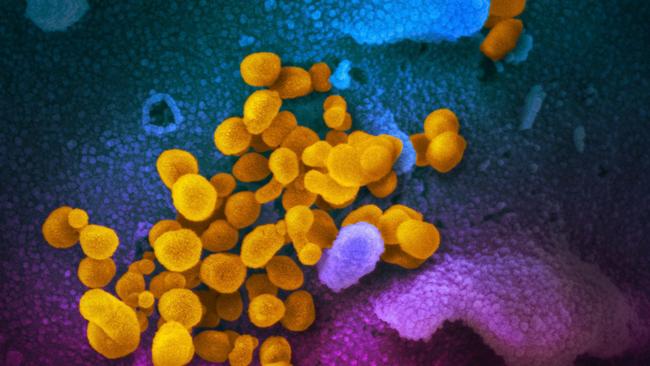Elderly most at risk of being struck down by coronavirus
Aging immune systems mean elderly people are more likely to die from coronavirus than are younger victims.

Elderly Australians are at higher risk of dying from coronavirus because of a deadly trio of factors: the decline in ability to fight infection, other illnesses a patient might have and the newness of the COVID-19 virus.
On Monday, the doctor who treated James Kwan, Australia’s first coronavirus fatality, confirmed the 78-year-old had a pre-existing health condition.
Asked what made Mr Kwan especially vulnerable to the virus, Dr Fiona Lake said: “(There are) poorer outcomes in older people and older people who may have co-morbidity, so unfortunately that was the case.”
The Australian understands Mr Kwan had respiratory problems before he tested positive to coronavirus at the Howard Springs quarantine facility in the Northern Territory.
He was evacuated to Sir Charles Gairdner Hospital in Perth with his wife, Theresa, who also has the virus, and he died overnight on Saturday.
Mrs Kwan, 79, was in a stable condition in isolation at Sir Charles Gairdner Hospital late on Monday.
David Smith, a virus expert at the University of Western Australia, said a reason older people were generally less able to fight the infection was “partly a by-product of an ageing immune system”.
Dr Smith said a second factor lay in other health problems commonly suffered by the elderly.
“That comorbidity means a person may have other pre-existing conditions such as lung disease, heart disease or diabetes.”
A third problem is the newness of the COVID-19 viral strain.
“In the last pandemic in 2009 caused by swine flu, mortality was low and many elderly people were spared,” Dr Smith said.
“It was one of those instances where it was good to be old.”
He said the reason was that older people had been exposed in the past to flu viruses similar to swine flu. “So they had built up a pre-existing immunity to those viruses.”
That didn’t exist in the case of COVID-19 patients.
Dr Smith said a pattern was emerging in the progress of the virus and its impact on patients.
“It may be mild in the first week and then a patient deteriorates in the second week.”
Data from the Chinese Centre for Disease Control and Prevention found that the sick and elderly were most at risk, although more than 80 per cent of all cases were mild.
Raina Macintyre, professor of Global Biosecurity at the University of NSW, says COVID-19 was highly transmissible, especially among the aged.
“If someone has coughed or sneezed on a handrail or a table or chair and you put your hand on it, you can infect yourself,” she said.



To join the conversation, please log in. Don't have an account? Register
Join the conversation, you are commenting as Logout